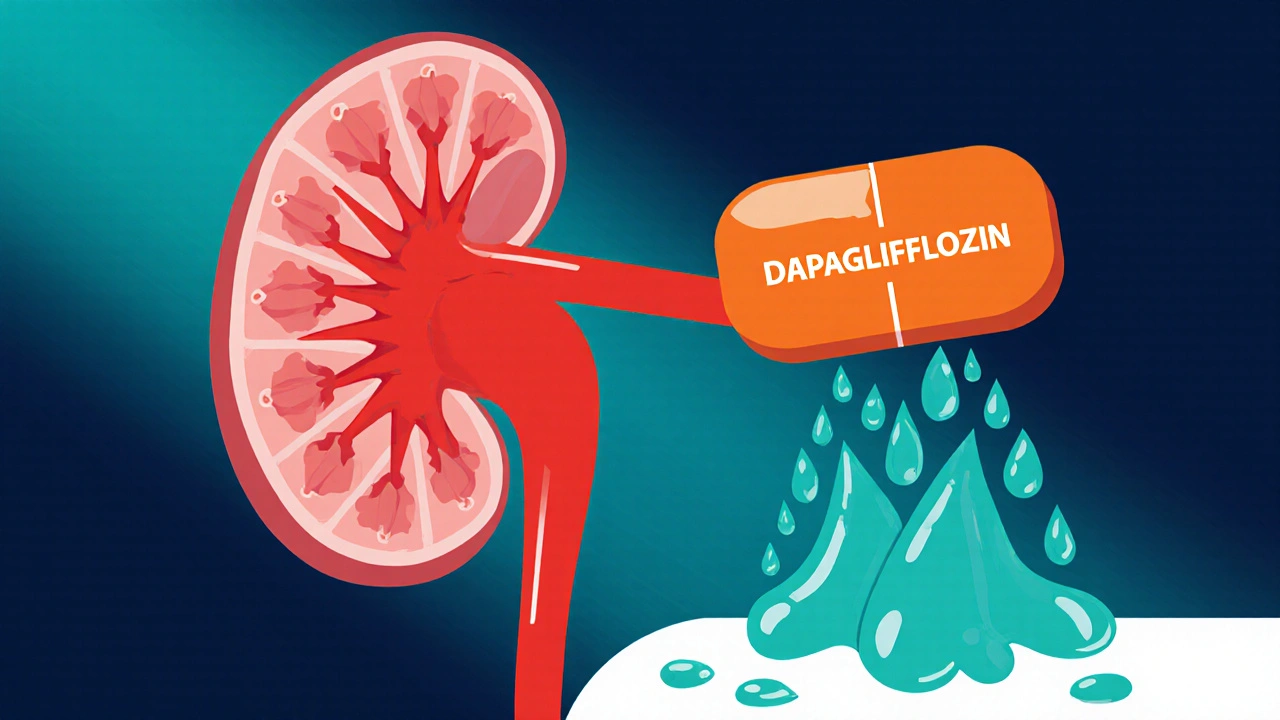SGLT2 Inhibitors: How They Work, Who They Help, and What Alternatives Exist
When you hear SGLT2 inhibitors, a class of oral diabetes medications that cause the kidneys to remove sugar from the body through urine. Also known as gliflozins, they work differently than most other diabetes drugs—instead of pushing insulin or blocking sugar absorption, they let your body naturally flush out extra glucose. This simple trick helps lower blood sugar without triggering low blood sugar episodes as often, and it’s why doctors now use them not just for diabetes, but for heart and kidney protection too.
These drugs include empagliflozin, a brand-name SGLT2 inhibitor shown in large studies to cut heart failure hospitalizations by nearly 30% in people with type 2 diabetes and heart disease, dapagliflozin, used for both diabetes and chronic kidney disease, even in patients without diabetes, and canagliflozin, which has been linked to reduced risk of kidney failure and cardiovascular death. They’re not just sugar-lowering pills—they’re protective tools. Many patients on these drugs lose a few pounds, see lower blood pressure, and report less swelling in their legs. But they’re not magic: they can raise the risk of yeast infections, urinary tract infections, and, rarely, a dangerous condition called diabetic ketoacidosis. That’s why they’re usually prescribed after metformin, or combined with it, not as a first step for everyone.
What’s interesting is how these drugs connect to other treatments you might see in the posts below. For example, people switching from older diabetes meds like sulfonylureas or insulin often look at SGLT2 inhibitors for fewer side effects and weight benefits. Others compare them to GLP-1 agonists like semaglutide—both help with weight and heart health, but SGLT2 inhibitors are pills, while GLP-1s are injections. If you’re managing diabetes and also have heart or kidney issues, SGLT2 inhibitors might be the missing piece. The posts here cover real comparisons: how these drugs stack up against alternatives, what side effects to watch for, and how they fit into broader treatment plans. You’ll find direct comparisons with other diabetes meds, insights on long-term safety, and even how they interact with common drugs like diuretics or blood pressure pills. No fluff. Just clear, practical info to help you understand if this class of drugs makes sense for you—or someone you care about.
Dapagliflozin and Neuropathy: Can It Help Prevent Nerve Damage in Diabetics?
Explore whether dapagliflozin can help prevent or slow diabetic neuropathy, reviewing mechanisms, trial data, benefits, risks, and practical usage tips.
